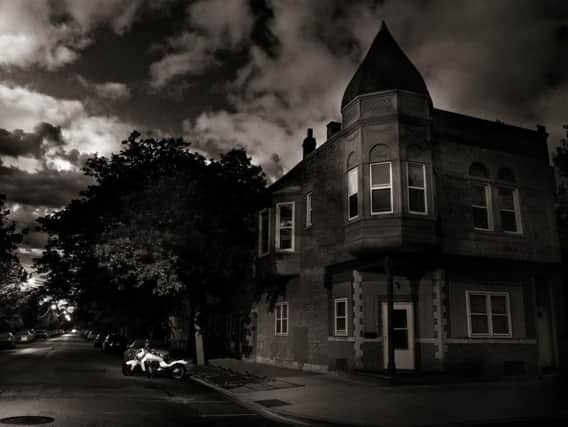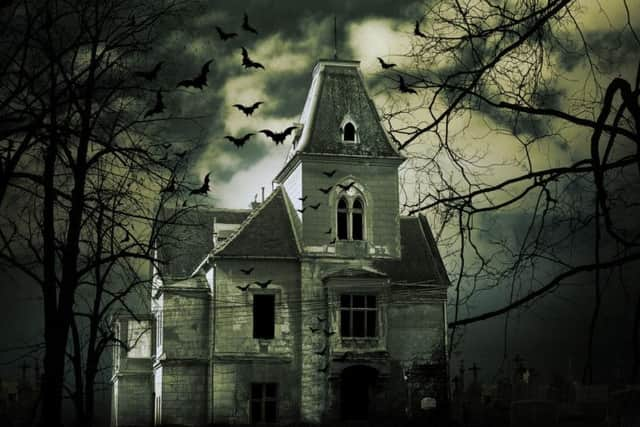Halloween: 10 of the most haunted buildings in the North East of England


Some date back hundreds of years ago.
Chillingham Castle, Northumberland


Located in the heart of Northumberland, Chillingham Castle is known as one of Britain’s most haunted historic castles.
This 13th century castle has a rich history of bloody battles, many of which continue to haunt its premises.
Advertisement
Hide AdAdvertisement
Hide AdFrom children walled up whilst still alive, to a vast array of tortured souls, many spirits haunt the halls of this ancient castle.
The most well-known ghosts of Chillingham Castle includes the ‘Blue Boy’ who haunts the Pink Room of the castle, Lady Mary Berkeley who wanders the halls searching for her husband, and John Sage who is known as the castle’s torturer.
Marsden Grotto, South Shields
Located on the coast at Marsden in South Shields, this pub is one of the very few 'cave bars' in Europe.
Many tales of ghosts and ghouls at this grotto relate to a smuggler named John the Jibber who gruesomely murdered by fellow criminals after selling information to HM Customs. It is believed that he was hung in a barrel in a cave close to the present lift shaft where he slowly died.
Advertisement
Hide AdAdvertisement
Hide AdA previous landlord of this pub used to leave out a special tankard of ale each night after closing and by the morning the tankard would be empty, this being drank by the ghost of Jibber. The original tankard was unfortunately lost during refurbishment
After local DJ and TV presenter Alan Robson drank from the tankard during one of his live Metro Radio shows, this reportedly started a sequence of supernatural occurrences, including flying ashtrays and flooding in the cellar after all the beer taps were mysteriously turned on.
This pub was also part of a UKTV ghost investigation in 2001, where paranormal researchers said they had found at least seven different spirits, which would tie in with the previous reports of banging, whispering, screaming and sightings of fully formed apparitions.
Seaton Hotel, Seaton Carew
This former coach house has a long history of paranormal activity, with bar staff frequently encountering ghostly occurrences.
Advertisement
Hide AdAdvertisement
Hide AdOne of the most renowned occasions relates to a member of staff going to open the pub at the beginning of the day, only to find mysterious wet and sandy footprints leading through the lobby, starting at one of the bolted entrances going onto the next.
The Royalty Theatre, Sunderland
This building was originally built as a church in the 1800s, but during the First World War, it was used as hospital, spread across two floors.
Now a theatre, this historic building has plenty of paranormal activity with many reported sightings of full apparitions at the back of the auditorium.
Haunting footsteps have also been heard on both the stage and the back stairwell, with items mysteriously going missing before reappearing in completely different parts of the theatre later on.
Advertisement
Hide AdAdvertisement
Hide AdDrastic drops in temperature around this building have also been reported, this being one of the key signs of suspected ghostly activity.
Hylton Castle, Sunderland
Known as one of Sunderland’s most renowned haunted buildings, this historic castle, which first dates back to the 11th century, has its very own ghost.
The Cauld Lad, said to be the ghost of stable boy Robert Skelton, is believed to have caused a lot of paranormal disturbance over the past few centuries.
Skelton was instantly killed after being struck by a pitchfork after being caught napping by Baron Robert Hylton, and his spirit remained in the castle, throwing dishes, plates and pewter around the rooms.
Advertisement
Hide AdAdvertisement
Hide AdIn 1905, a lady who lived in the castle at that time alleged that the noisy goings-on of the Cauld Lad were so loud that it was impossible to sleep in the room where the murder of Skelton took place.
Beamish Hall Hotel, County Durham
Beamish Hall hotel is a historic building located in County Durham, which dates back to the mid-18th century. near the town of Stanley. It is grade II listed building which has had numerous reportings of paranormal activity.
One of these ghostly sightings is that of an Edwardian lady in a pink hat who is seen sat in the Eden Lounge with a parrot and a cat, whilst another female spirit who is believed to have suffocated in a trunk after hiding to avoid a pre-arranged marriage, was spotted by a vet who once visited the house.
Children have also been heard playing in the attic and ghostly figure of a woman who goes by the name of Charlotte is also frequently seen in the hotel’s reception.
The Old George, Newcastle
Advertisement
Hide AdAdvertisement
Hide AdSituated in Newcastle’s popular Cloth Market, the Old George is a public house which dates back to the 17th century, once being a former coaching inn.
It was visited numerous times by King Charles I 1646 and the chair he sat in whilst drinking at the Old George remains to this very day in the ‘Charles I Room’, with many visitors having claimed to see the outline of a ghostly figure sat in the very same chair.
Footsteps have also been heard in the bar by staff when the bar has been closed and nobody else was around, these footsteps getting closer and closer and then coming to a sudden halt.
Other ghostly sightings include a man with a dog who has been seen several times standing at the bar, and staff have also reported feeling both nauseous and like they are being watched when in the main function room, some refusing to go into this room alone.
Castle Keep, Newcastle
Advertisement
Hide AdAdvertisement
Hide AdBuilt on the site of the fortress which gave the city of Newcastle its name, Castle Keep is the Castle’s main fortified tower, and dates back to the 12th century.
One of Newcastle’s most haunted buildings, the ghost of the Poppy Girl, who died after being imprisoned in the castle, is one of Castle Keep’s most renowned ghosts.
Other paranormal activity includes the ghostly chanting of unseen monks, and blood-curdling screams which have been heard coming from the gallery.
This haunted building has also been the subject of numerous paranormal investigations, once featuring in an episode of Most Haunted.
Washington Old Hall, Washington, Tyne and Wear
Advertisement
Hide AdAdvertisement
Hide AdWashington Old Hall is a manor house which is located in the Washington area of Tyne and Wear, the very first building on the site that Washington Old Hall now stands upon was that of a wooden Saxon Hall dating back to the 10th century.
This hall is said to be haunted by the spirit of a woman whom is described as wearing a long grey dress and gliding along the floor, usually accompanied by the smell of lavender.
Crook Hall, County Durham
This 14th century Grade I listed manor house, located in Durham, is said to be haunted by the renowned ‘White Lady’.
One of County Durham’s best known ghosts, the White Lady of Crook Hall has frequently been seen gliding down a disused wooden staircase in the oldest part of the hall, alongside reported sightings of a beautiful woman dressed in white seen in other areas of the building.
There are also rumours of secret passageways which were lost during the hall’s many years of rebuilding and restructuring, providing a mysterious aura to the already haunted house.